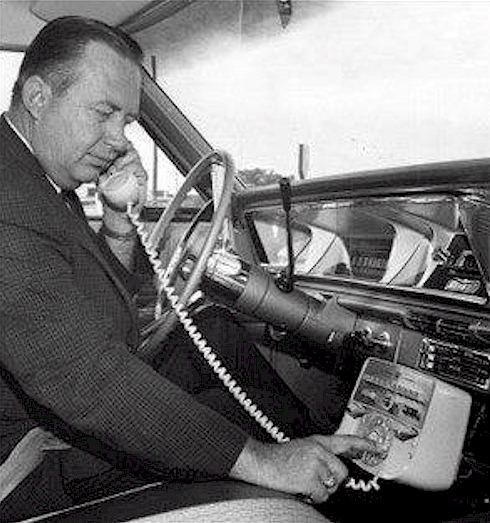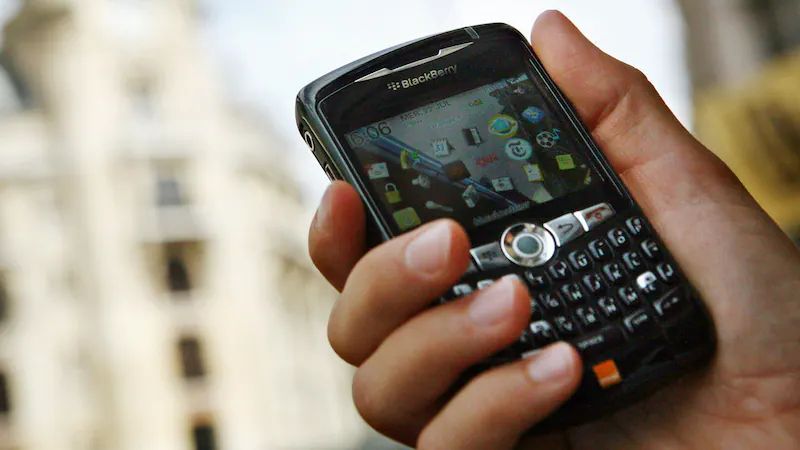The History of Mobile Communication
from Spark-gap transmitter to 5G
No other technology has such an impact on our daily life like telecommunication, especially mobile communication. Wherever we are, we are able to get all information we like and can connect to everybody and everything.
What is the story behind mobile communication? How did this technology develop over the years? Today, everybody is talking about 5G and the power behind 5G. But do we know, what is behind this buzz word? And what is 2G, 3G and 4G?
This WebPage tries to show the history of mobile communications and who and what was involved in it.
If you have feedback regarding this WebPages please don´t hesitate to contact info@mobile-history.de.
Development of Radio Transmissions
1746 – 1945 Early Developments
Before we start to look at mobile telephony we are exploring the development of wireless communication. This starts with the discovery of electricity. With electricity we were able to develop telegraphy and finally the telephone. The discovery of the electromagnetic waves was leading to wireless telegraphy and finally to the radio. By the end of the Second World War, first „walkie talkies“ became available to build the basis for the mobile phones.

But it was not just a succession of inventions. There were also new companies rising to build the new technology. Telecommunication was operated by the local governments who wanted to be in control. Only in the US the telegraphy and telephony was operated by private companies from the very beginning.
The Car Telephone
1945 – 1980 The Car Phone
Mobile communications began after the Second World War. In the beginning there where no cellular networks as we know them today. Instead, connections were established to the landline network via a few radio channels. Mobile phones were almost exclusively car phones. In the first wave, conversations were arranged manually by human operators. In Germany this service was called the „A-Netz“, in the US Mobile Telephone Service (MTS). From the 1970s onwards, the manual switching service became automated. Devices of the second wave came up with new services. In Germany these services where called B-Netz, in the US Improved Mobile Telephone Service (IMTS).

The complex functionality of car phones would not have been possible without advances in electronics. The invention of the transistor and later the integrated circuits were crucial for the rapid progress im mobile communication. At the end of the 1970s, progress made it possible to move towards so-called cellular mobile communications. In the 1950s, such a system was still considered unfeasible.
1G, First Generation, Cellular analog telephony
1980 – 1990 1G First Generation Mobile Communications
The first cellular networks emerged in the early 1980s. Today these networks are called 1G (first generation). The main innovation was the cellular structure, a network consisting of small cells with a size 1-10 km. This dramatically increased the capacity of the networks since frequencies for the connections could be reused in distant cells. However, handling the cells required increased use of so-called control channels. In those channels, information was already been transmitted digitally. The transmission of speech was still analogue using frequency modulation. The main representatives of these 1G systems were the American AMPS system with the English offshoot TACS, the Scandinavian NMT system and in Germany the C-Netz.

With the first cellular systems, private network operators emerged for the first time. Especially in the USA, there were initially countless providers in the various metropolitan regions beside the so-called “Baby Bells” who were also providers of the landline telephone networks. The first private provider of a mobile telephone system in Europe was Racal, which later called itself Vodafone. It came up in the UK which started private networks already with 1G.
2G Second Generation, Digital Cellular Phone
1990 – 2000 2G Second Generation Mobile Communication
Back in the 1980s, Europe set out to create a uniform mobile communications system. New bands at 900 MHz have been made available for this purpose. A group called GSM emerged which defined the standard. A digital standard became available, i.e. the voice signals were also digitized and coded in order to gain more capacity through time slot processes (TDMA). In 1987, an agreement was reached on such a system, which was then introduced in Europe from 1991.
In the USA, a digital system was also introduced to improve the capacity of the AMPS system. TDMA was also used here. At the same time, the young company called Qualcomm developed a digital system based on a completely new process: CDMA. This was introduced in 1995 by some operators in the USA.
With 2G handheld devices became smaller and cheaper. Mobile communications transformed into a consumer business. Not only business people now used cell phones, but also simple private users, even young people.

The industry, especially the semiconductor industry, is making enormous progress. Special integrated circuits so-called ASICS were developed to implement the complex functions of digital mobile communications. Across Europe, the mobile phone business is being privatized and there are many new private mobile operators. In the USA, the mobile phone business is consolidating. Where there were initially only local operators, there are now nationwide mobile networks that are only controlled by a handful of mobile operators. The mobile phone business is going global.
In addition to the cellular networks, satellite telephones were also created, although these did not prove to be profitable. Nevertheless, it survived to this day.
From the turn of the millennium onwards, a new type of telephone emerged, the feature phone. More and more additional features are being integrated into the phone to increase its value and utility. This also creates a new digital standard called Bluetooth, which can be used to connect a feature phone to external devices. Finally, the Internet also connects with mobile communications. For this purpose, the GSM standard is being expanded so that it improves Internet access through higher data rates and also via packet-switched networking. We are talking about 2.5 G.
3G Third Generation, digital broadband phone
2000 – 2010 3G Third Generation Mobile Communication
Back in the 1990s, the ITU tried to specify a common global mobile communications standard called IMT2000. However, there was no agreement on such a standard. Two standardization organizations developed: 3GPP, which further developed the GSM standard and 3GPP2, which advanced the Qualcomm-based CDMA standard. Both developed different 3G systems. The GSM successor was called UMTS and was based on wideband CDMA, which was also used in Japan very early on. Qualcomm and the 3GPP2 developed CDMA2000. Both systems became IMT2000 standards and the world remained divided for another decade.
UMTS had a late start, although it was specified in 1999. It wasn’t until the mid-noughties that the networks began to be set up, but there was no initial success. Only when the data rates of UMTS were noticeably increased through the introduction of HSDPA did 3G take off. This was primarily driven by the new smartphones, which began to dominate the market after the iPhone was released and demanded more and more data transfer.

Parallel to 3G, a non-cellular standard for transmitting data developed: WLAN. A new, advanced transmission technology was used for the first time in WLAN: OFDM. It allows the most efficient data transmission and therefore the highest transmission data.
4G Fourth Generation, Broadband Mobile Internet
2010 – 2020 4G Fourth Generation Mobile Communication
Once again it was the ITU that set the goals for the next generation of mobile communications. The main feature of 4G was that this network should be purely IP-based, have high efficiency and a data rate of 100 Mbit/s. Such an incredibly large data rate could only be achieved through OFDM-based transmission. This is how OFDMA emerged as a new transmission standard. Thanks to OFDM, the bandwidth of the channels could be increased to up to 20 MHz. 3GPP called this standard LTE (Long Term Evolution). A standard for 4G defined by 3GPP2 and Qualcomm was unable to establish itself. Instead, there was a rival system called WiMAX that invaded the mobile world from the PC/IEEE world. However, WiMAX was unable to prevail despite support from Intel.
LTE was gradually used from 2010 and soon replaced 3G-based transmissions. The smartphone prevailed and the feature phone became less important. Data services dominated transmission from 2009 onwards. The smartphone and its APPS led to an exponential growth in data transmission.

With LTE Advanced, the data rate was increased again to a theoretical 1 Mbit/s. This was done by using multiple antenna technology (MIMO) and channel bundling.

